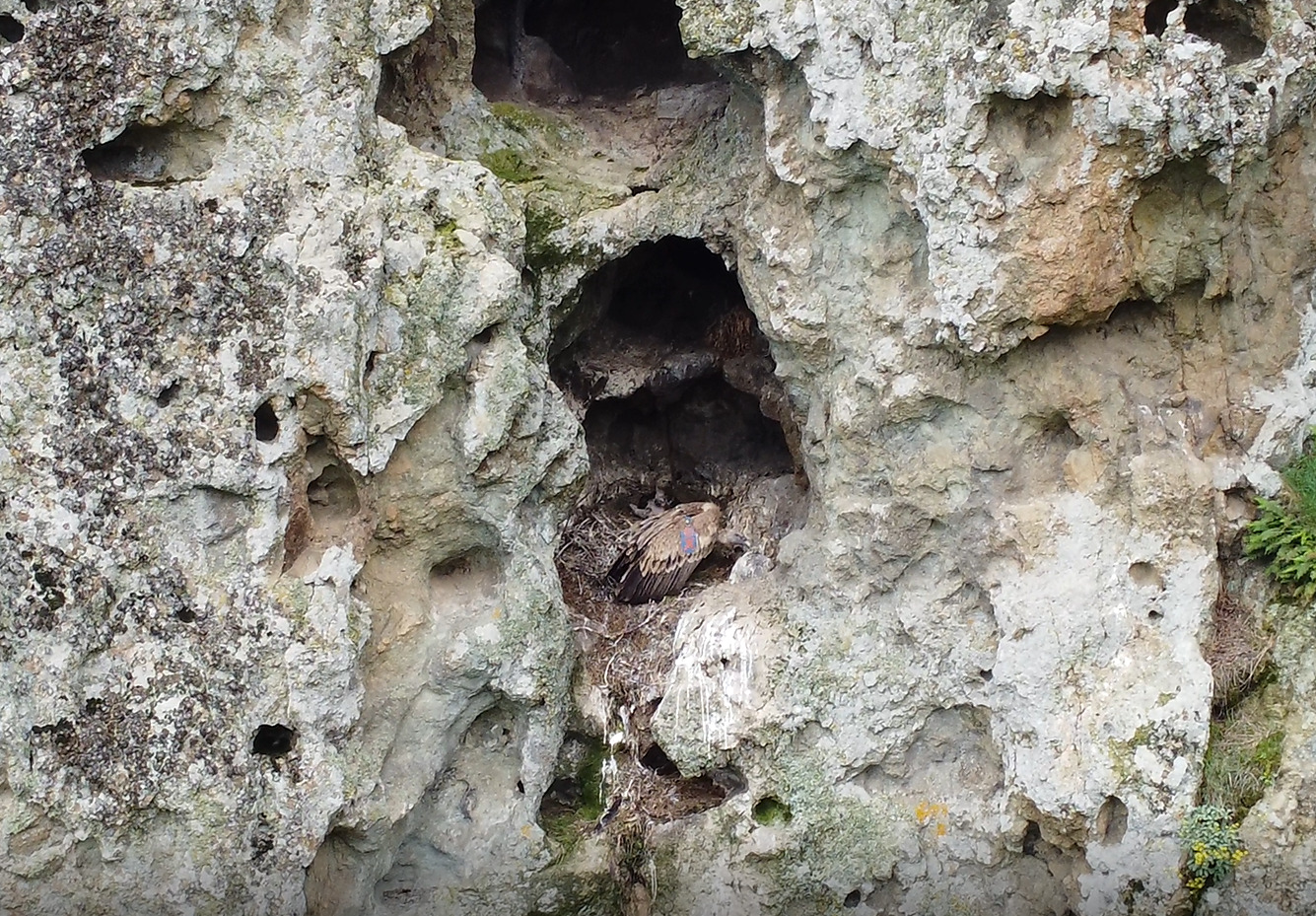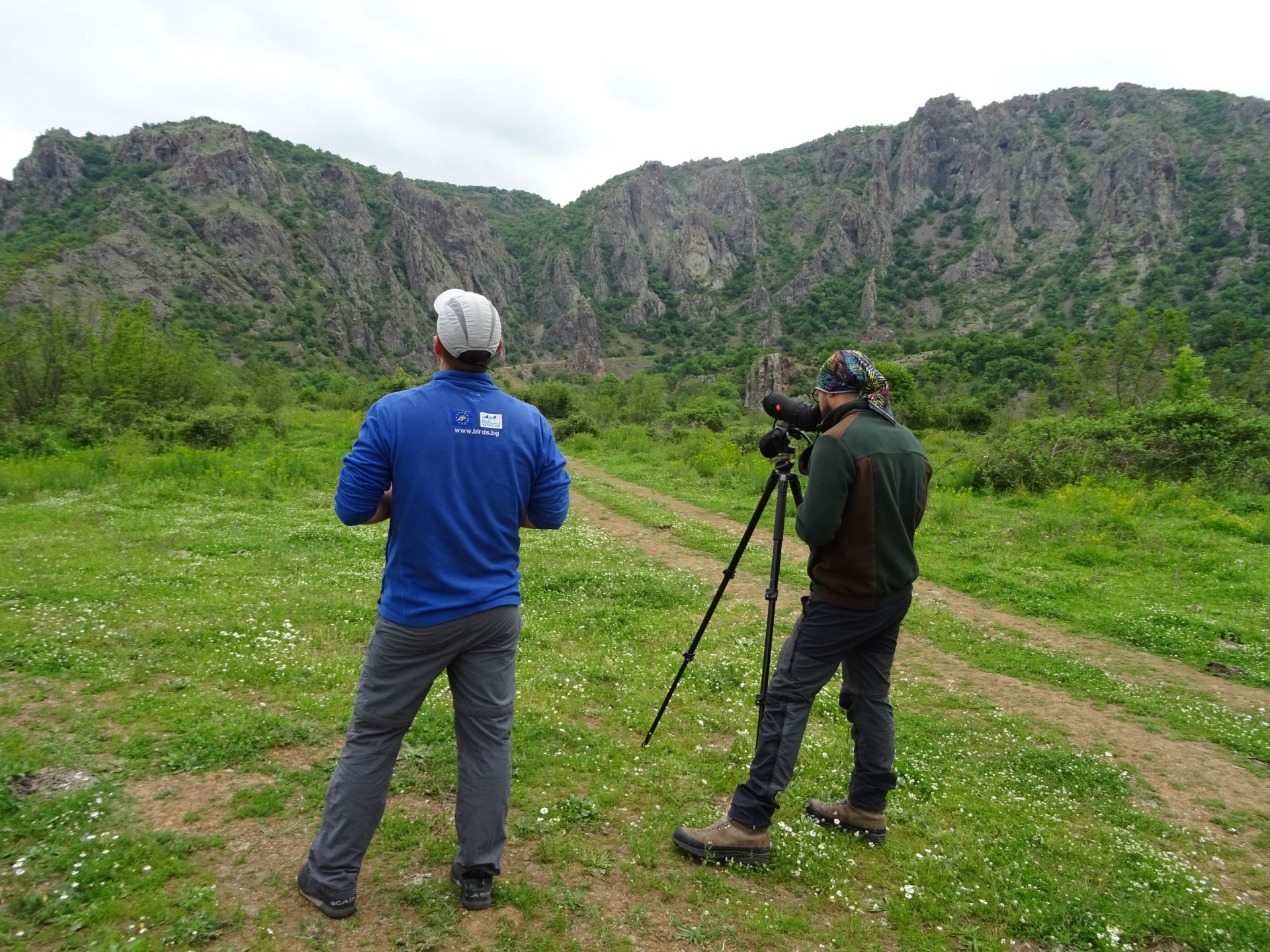A record number of 90 griffon vulture chicks have hatched in the Rhodope Mountains rewilding landscape this year – 15 more compared to 2022. The good news marks milestone success for the local rewilding team as this record-breaking result represents another positive step forward in the Balkan-based comeback of these magnificent birds.

The annual monitoring of the nesting vultures colonies in the Eastern Rhodopes reports the nesting success is carried out by the Bulgarian Society for the Protection of Birds (BSPS). Activities on monitoring, research and conservation of the griffon and black vulture in the Rhodopes are carried out with the financial support of Rewilding Rhodopes Foundation and Rewilding Europe.
During the regular monitoring, a total of 120 occupied territories were registered. The number of nesting pairs is a record compared to previous years in the Rhodopes – 103. ‘At the moment we have 3 more pairs that are in the brooding stage because they have nested again, so I hope for three more chicks’, adds Dobromir Dobrev from BSPB team.
Vulture chicks hatch at the end of March and early April. The next few months are critical to the development of the newly hatched chicks. Their parents need to ensure they have enough to eat as they prepare to leave the nest. They are then raised by their parents for nearly four months until they are ready to fly, taking to the air for the first time around 140 days after birth. By the middle of summer, the young vultures typically weigh about seven to eight kilogrammes; while they are not quite as heavy as their parents, they are the same size, and have all their feathers (although the colouring in juvenile vultures is different to adult birds).
Griffon vultures are known to be caring parents, with both partners changing position while hatching the egg and raising their chick. During hot summer days each parent can spend hours with extended wings, shading their offspring.
The griffon vulture was once widely distributed across Bulgaria. But by the early 1970s it was thought to have disappeared completely, largely due to a lack of carrion, habitat loss, persecution and poisoning. In 1986 a griffon vulture colony was discovered near the small town of Madzharovo in the Eastern Rhodope Mountains, consisting of about 20 birds and three nesting pairs. Ongoing conservation efforts have seen Bulgaria’s griffon vultures recover from this low point.

The fact that vultures are making a remarkable comeback in the Rhodopes is good news for the Rhodope Mountains rewilding landscape. Vultures are keystone species, playing an essential scavenging role as recyclers of natural carcasses; the long-term aim in the Rhodopes is to discontinue vulture restaurants (feeding platforms where food is provided by local teams) when there is enough natural food available for the birds to eat. Rewilding Rhodopes team have been working for years to provide food alternatives to domestic animals by reintroducing and restocking groups of wild and semi-wild herbivores – wild horeses, fallow and red deer.
Vultures are also sensitive to ecological conditions: if a population is increasing, it is a good indication that the overall health of the local ecosystem is also improving. Vulture rewilding efforts will contribute to the creation of a wilder Rhodopes where nature and people flourish alongside one another in a landscape governed more by natural processes, such as natural grazing and scavenging.